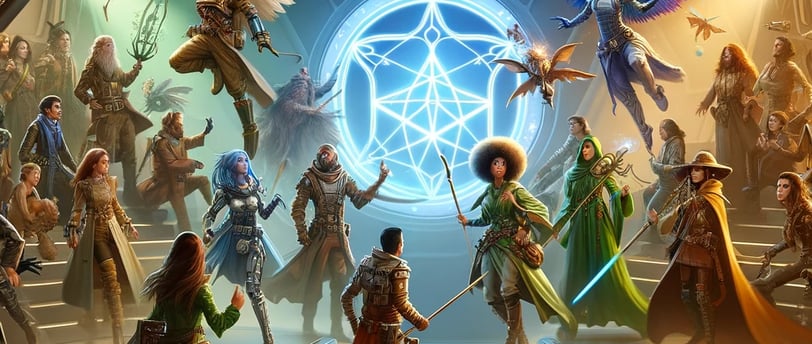The Key Differences in D&D One: What You Need to Know


Dungeons & Dragons One (often referred to as D&D 5.5e or 5.1e) is set to be the next evolution of the popular tabletop RPG, building on the foundations of 5th Edition (5e). With a focus on flexibility, balance, and accessibility, this new version introduces a number of changes that players should get excited about. Here’s a breakdown of the key differences and updates:
1. Character Origins
In D&D One, the character creation process has been revamped for more flexibility. Instead of tying ability score improvements to a character’s race, they’re now linked to their background. This shift emphasizes the narrative and flavor of race, allowing players to choose backgrounds that better fit their desired abilities without being restricted by racial bonuses.
2. Feats
Feats are taking center stage in D&D One. Instead of being an optional system, many backgrounds now come with feats baked in. The feat system itself has been updated to make them more impactful and widely applicable, giving players more meaningful choices during character progression.
3. Unified d20 System
Consistency is key in D&D One, with a unified d20 system applied across more mechanics. Abilities, spells, and actions that once required different rules for saving throws or checks now follow a more streamlined system. This simplification makes gameplay smoother and easier to grasp, especially for new players.
4. Revised Classes
Classes are getting much-needed updates, particularly when it comes to balance between martial and spellcasting classes. Spellcasters will see lower-level spells scaling better over time, while martial classes will have additional options to keep pace with their spellcasting companions as they level up.
5. Rules Adjustments
Expect changes to the rules around rests, critical hits, and inspiration mechanics. These adjustments aim to make gameplay faster, more intuitive, and balanced for all types of players.
6. Virtual Tools
One of the most significant pushes with D&D One is its integration with virtual tools and online play. Digital tools and virtual tabletops (VTTs) will be a central part of the experience, making it easier to access, play, and manage games remotely. This digital push aligns with the growing trend of online play that emerged during recent years.
D&D One is shaping up to be a flexible, player-friendly update that both experienced and new players can dive into with ease. With more character customization, streamlined rules, and digital integration, this new edition is set to offer an exciting evolution in the world of D&D.
